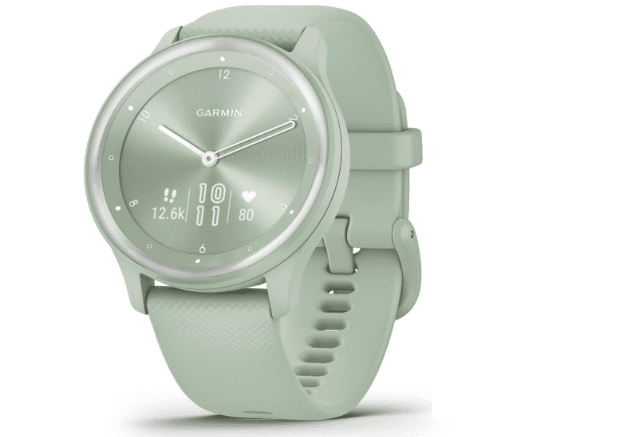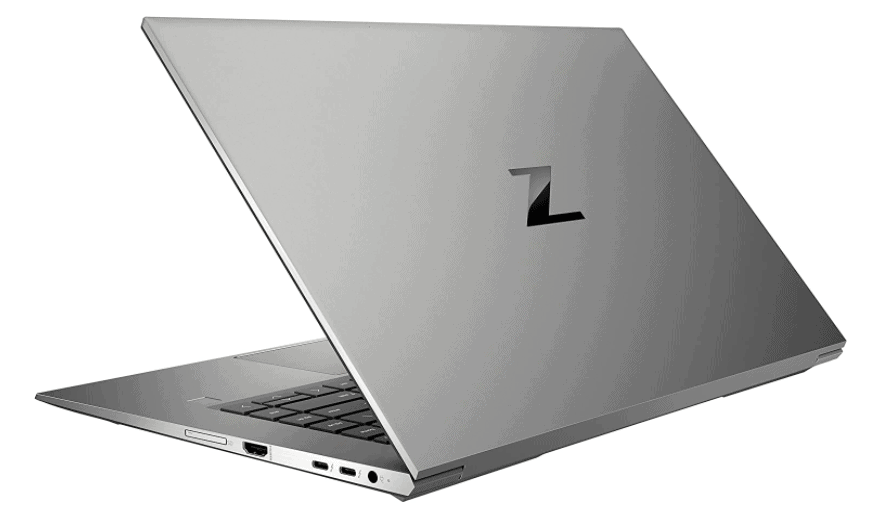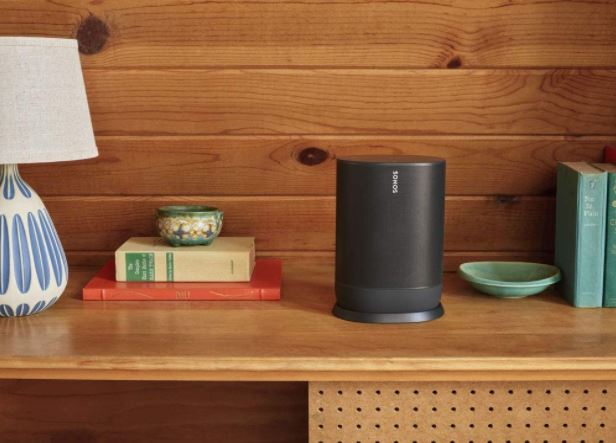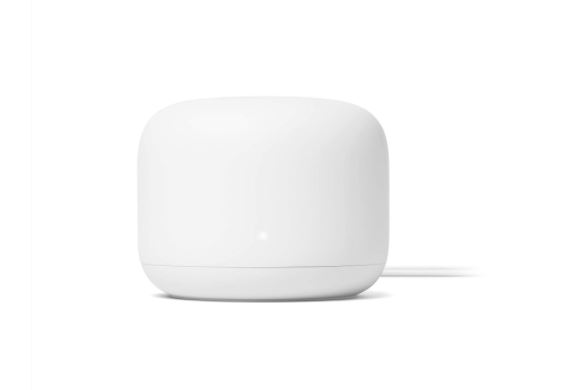In the realm of tablet computers, Microsoft has established an unrivaled benchmark with its Surface Pro product line. The lightweight tablet comes with a kickstand, pen-enabled touchscreen for input, robust all-metal construction, and a detachable keyboard folio. These are all features that the tablet’s primary competitor, the iPad Pro, has imitated in some manner throughout the years. And since the Surface series made its debut ten years ago, the factor has caught on with Microsoft’s partners, and the IdeaPad Duet 5i from Lenovo is the newest one to adopt this famous form.
If you are looking for a Windows tablet and have had your sights set on the Surface Pro from Microsoft, the IdeaPad Duet 5i should be on your short list of devices to consider. Not only does the starting price of the tablet produced by Lenovo comes in at a lower range than that of the Surface Pro, but it also includes a keyboard folio as standard and is equipped with a fantastic feature that is conspicuously absent from that product. Is the tablet’s price justified by the dexterous maneuver that the Duet offers? Continue reading to discover.
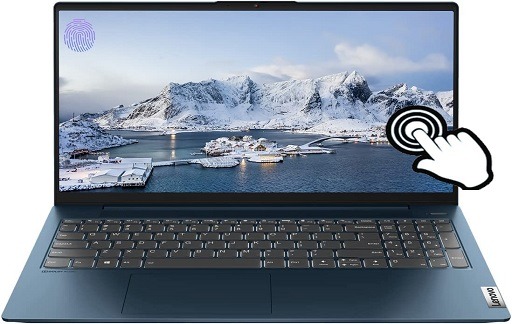
Lenovo IdeaPad 5i specifications
In spite of the fact that Lenovo provides the IdeaPad Duet 5i in a variety of configurations that make it competitive against Microsoft’s Surface Pro 9 with greater specifications across the globe, the Duet is only offered in the United States in its most fundamental Core i3 iteration. The Core i3 version of the IdeaPad Duet 5i was used for this review. Currently, customers in the United States may get this model from Best Buy at a discount for the price of $599. Surprisingly, Lenovo’s online store does not currently carry this tablet in its inventory at this time.
Lenovo IdeaPad Duet 5i (Gen 7) specifications
| Processor | Intel Core i3-1215U |
| Graphics | Intel integrated graphics |
| Memory | 8GB LPDDR4x |
| Storage | 128GB SSD |
| Display | 12.3” 2.5K (2560 x 1600) IPS, 16:10, 450 nits, 96% DCI-P3, Dolby Vision |
| Rated battery life | 11 hours |
| Camera | 5MP front; 5MP rear |
| Dimensions | 288.3mm x 193mm x 9.45mm / 11.3” x 7.5” x 0.3” |
| Weight | Tablet: Starting aat 809g (1.78 lbs); Folio Case: Starting aat 360g (0.79 lbs) |
| Audio | 2 x 2W speakers with Dolby Audio |
Lenovo IdeaPad Duet 5i Design
There are a lot of ways in which the most recent Windows slates from Lenovo and Microsoft are comparable to one another, and this is not always a negative thing. Both of these tablets have a sturdy construction made entirely of metal, which is characterized by their planar surfaces, straight lines, and corners and edges that are ever-so-slightly rounded. Both slates also include a helpful kickstand, which eliminates the need to install a cumbersome case in order to get this capability. In addition, both slates offer support for a removable keyboard cover, which niftily changes the slate into a tablet when you are working at a desk.
And just like Microsoft’s most recent Surface Pro 9 features a new Sapphire blue hue, our review unit of the Duet comes in a striking and similar Stone blue colorway. This makes it an excellent choice for individuals who want a pop of color in contrast to the standard silver and gray options that are currently available.
Although they have certain design similarities, these two businesses took very different approaches to the process of designing their slates. The differences are subtle but noticeable. When the Surface Pro 9 is used as a tablet, for example, the “squared” screen aspect ratio of Microsoft’s 4:3 screen feels more like holding a sheet of paper, whereas Lenovo took a more balanced approach with a screen that has an aspect ratio of 16:10, which makes watching 16:9 videos more enjoyable when the device is in tablet mode.
The top and bottom bezels in landscape mode are slightly larger to accommodate grippy hands when rotated to portrait mode and used as a tablet. In this orientation, Microsoft’s slimmed-down side bezels follow the near-bezel-less trend that competitors HP, Dell, and Lenovo have taken with their laptops. In landscape mode, the top and bottom bezels in landscape mode are slightly larger to accommodate grippy hands. Having said that, the IdeaPad Duet’s uniform bezels on all four edges just look visually more pleasing to me, and Microsoft hasn’t utilized this approach since the release of the Surface Pro 8.
The diagonal screen measurements for these slates also vary from one another, in addition to the fact that these slates have distinct aspect ratios. Lenovo’s usage of a slightly smaller display, measuring in at 12.35 inches rather than Microsoft’s Surface Pro 9’s 13 inches, makes it marginally lighter for traveling purposes. The weight of the Duet 5i is 1.78 pounds, which is 0.16 pounds less than the weight of the Surface.
Ports provide yet another obvious area in which the Duet departs significantly from its highly influential forerunner. The Duet continues to use the same implementation as the Surface, which includes two USB-C connections. On the left side of the Duet is where you’ll find both the primary input and output ports, and either one of these ports can be used to connect either power or data. And despite the fact that Microsoft eliminated the 3.5mm headphone connection on the most recent generation of the Surface, the connector is still there on the Duet, which makes this tablet a good option for anyone who loves listening to music using wired headphones. On the right side of the device is where you’ll find the 3.5mm headphone jack, as well as the power button and the volume rocker.
And because there is no Surface Connect port on the Duet, you’ll either have to rely on USB-C for your docking needs if you want to connect power, accessories, and a display to Lenovo’s tablet all with a single cable, or you’ll have to settle for using a different docking solution altogether. The disadvantage of not having a magnetic connector for charging the Duet is that Lenovo did not implement its own version of the proprietary magnetic connection used by Microsoft. This means that you do not have this convenience. The keyboard can be connected to the Duet through the use of some cutouts as well as the POGO pins located on the bottom. When attached, the keyboard will magnetically attach itself to the slate in the same way that the Surface does. When the screen of the Duet is closed, magnets on the screen will assist in keeping the keyboard linked to the screen, which will make it easier to transport the entire product.
Vents may be found on the top edge of the tablet when it is held in landscape orientation, as well as on the sides of the tablet in a disguised position just below the speaker perforations. The Duet uses fans for active cooling, even on our lower-end Core i3 configuration; nonetheless, the fans are quieter than the majority of laptops that we have tested, coming in at approximately 35 to 40 dBa at ear level. I had thought that Lenovo, with a less premium processor, would have been able to work out a base model that did not require a fan. After all, Apple’s 12-inch MacBook, which has since been retired, was fanless, as is the entire iPad family.
Lenovo IdeaPad Duet 5i Keyboard
The keyboard is where the Surface Pro 9 and the IdeaPad Duet 5i most clearly part ways, despite the fact that the differences between the two are modest. Although both slates come with a detachable keyboard folio cover, the implementations of these covers vary slightly. If you want to use the slates as tablets instead of laptops to save on weight, you may remove the keyboard entirely from one of the slates.
The fact that the keyboard from Lenovo comes equipped with both a battery and a Bluetooth radio puts the company ahead of its competitor in this category. The fact that the keyboard may be detached from the IdeaPad Duet 5i while typing can still be done on the tablet enables greater maneuverability in terms of where the tablet is placed and how it is held. For instance, you could position the screen close to your television, link it to the HDMI port, and then use the folio keyboard attached to the tablet to manage Windows while sitting on the couch.
It wasn’t until I actually tried out this function that I realized how much I would come to adore it. This neat trick makes the folio keyboard a lot more helpful than it would have been otherwise. Because of this implementation, I no longer need to carry around a separate Bluetooth keyboard, which is great news for my neck. Instead, I can utilize a tablet stand when I am working at a coffee shop and type on the same keyboard instead of having to carry around a separate keyboard. Making use of this tablet easier on the neck and improving its overall ergonomics are both made possible by this more ergonomic experience.
According to Lenovo’s claims, the battery contained within the keyboard section may support continuous typing for a duration of up to 28.3 hours while the backlight is disabled.
The keyboard has a substantial feel to it, much like the Type Cover on the Surface Pro. You receive a fabric cover on the exterior that looks and feels like twill and matches the inside color when you go for Lenovo’s implementation. The choice of a softer fabric for a surface that would touch tabletops is a bit alarming, especially for individuals who work in communal areas like coffee shops; nonetheless, I discovered that the cover has held up and there is no sign of stains or wearing after using the Duet for several weeks.
You get a tough plastic cover on the interior that goes over the keyboard deck, and it has keys that are laid out in an island-style configuration. The firm plastic shell is a wonderful feature because it not only helps to protect the screen from harm when the keyboard is closed, but it also gives the keyboard a feeling of stability when it is being used. This is very useful for typing. Although you won’t get the premium typing experience seen on Lenovo’s more premium ThinkPad keyboards, the keys on this device are comfortable to type on and have adequate key travel. Additionally, there is no flexing when typing on these keys. The fact that I did not have a rapid bottoming out experience, as I experienced with some less expensive laptops that I’ve lately tried, contributes to the ease with which I can type.
The keyboard also has the capability of having backlighting. You have the option of configuring the device so that the light goes on by itself when the surrounding environment becomes darker, or you can manually tune the light to one of three distinct levels: off, dim, or normal brightness. The backlight on the keyboard cover of the Duet shuts off automatically after a few seconds of inactivity, but it will turn back on as soon as you start typing on the keyboard. This is in contrast to the majority of laptops, on which the backlight remains illuminated even when the surrounding environment is dark. You will need to press a key on the keyboard in order to reactivate the keyboard backlighting once it has gone black in order to conserve battery power. Unfortunately, moving the pointer on the trackpad will not achieve this; instead, you will need to press a key on the keyboard.
The “wired” linked mode as well as the wireless mode achieved through Bluetooth both make use of the smooth trackpad’s adequate size and accurate tracking capabilities.
Another difference between the keyboard on the Duet and the Type Cover is that the back edge of the keyboard on the Duet cannot be magnetically attached to the screen. This feature is available on the Surface. By slightly elevating the keyboard, the solution by Microsoft produces a more ergonomic experience for the user when typing. If you want to type on the Surface while it is resting on your lap with the kickstand extended, the modest elevation that the keyboard provides really contributes to the overall stability of the configuration, which is somewhat of a pleasant surprise. You can get by with lap typing on the Duet, but you should be prepared for some swaying as you work.
When you attempt to open the kickstand on the Duet from the middle of the bottom edge, you will hear a cracking sound. This is something that you should be aware of with the kickstand on the Duet. Activating the kickstand by prying it out from either side edge does not, on the other hand, result in the cracking noise, and despite the audible peculiarity, I did not discover any performance concerns that were particularly noteworthy.
Lenovo IdeaPad Duet 5i Display and Speaker
Although Lenovo’s IdeaPad Duet 5i is categorized as a mid-range tablet, its screen is more than capable of competing with the displays on some of the most advanced Windows devices, such as Microsoft’s Surface Pro 8 and Surface Pro 9 tablets. In addition, the screen of the IdeaPad Duet 5i exceeds the desired Surface in a number of essential respects.
The display on the Duet 5i outperforms the display on the Surface Pro 8 in terms of the color accuracy of its screen thanks to its support for 100% of the sRGB color space, 90% of the wide AdobeRGB color space, and 98% of the P3 color space. The sRGB, AdobeRGB, and P3 color spaces all gave the Microsoft tablet a score of 100%, while sRGB scored 83% and P3 scored 81%. In addition, the screen technology known as Dolby Vision is utilized by both the Lenovo tablet and the more recent Surface Pro 9.
Screen brightness is another area in which the Duet shines above its competitors. At 561 nits, not only can this display get brighter than the Surface Pro 8’s 441 nits of peak brightness, but it can go down to just 5.7 nits. The higher peak brightness means that this screen will still be readable in outdoor conditions, and the lower number means your retina won’t be scorched out if you’re trying to work at night in the dark. For comparison, Apple’s latest 12.9-inch iPad Pro with Apple’s Liquid Retina XDA display can reach a peak brightness of up to 1,600 nits under certain conditions.
Our display analysis tests using Datacolor’s SpyderX colorimeter showed that the Duet exceeded Lenovo’s display claims. In spite of the fact that Lenovo claims the screen’s maximum brightness can reach 450 nits, we measured it and discovered that it was at least 100 nits brighter.
The 561 nits that the Duet’s screen has meant that I was able to use it outside without any issues. This slate, which has a screen coated in glass, continues to have issues with reflections and glare, particularly when the illumination from above is more harsh. This problem may have been mitigated by using a screen with improved lamination, but doing so would have increased the cost of the Duet.
According to the results of the research performed by our DataColor colorimeter, the brightness uniformity throughout the display is good, but not great. When I looked at the screen with the naked eye, I did not observe any variations in the panel’s overall brightness, and more critically, we did not observe any obvious light leakage.
And like the Surface Pro 9, Lenovo’s IdeaPad Duet 5i allows pen input. Although a digital stylus was not included in our package (it is included in some other configurations), you have the option to purchase one separately if you intend to use the Slate for activities such as drawing or taking notes. Upgraded variants equipped with a more powerful 12th Generation Intel processor might prove to be an excellent slate for digital artists, particularly when combined with the Duet’s screen that provides realistic color reproduction.
Lenovo IdeaPad Duet 5i software
The Lenovo IdeaPad Duet 5i’s software is a point of contention, and this problem becomes much more evident for users who are transitioning from a Microsoft Surface PC product of any kind. Lenovo preloaded the IdeaPad Duet 5i with its own software, in contrast to Microsoft’s pristine installation of Windows on the Surface.
Certain apps that were developed by Lenovo, such as the Lenovo Vantage title, can provide information about your hardware, how your tablet is operating, as well as the current status of your warranty and any relevant details. You are able to create keyboard shortcuts with the help of Lenovo Hotkeys, which also provide access to the device’s predefined hotkeys. However, other bloatware, the preinstalled version McAfee antivirus suite, are at best a nuisance with its constant pop-ups reminding you to subscribe. New users to the Duet should uninstall McAfee immediately and instead use Microsoft’s bundled Windows Security tools to keep their devices safe from malware.
Lenovo IdeaPad Duet 5i Webcam
You will also receive a pair of webcams with a resolution of 5 megapixels when you purchase the Duet. You will receive a sensor that faces the rear of the device and has a resolution of 5 megapixels. Additionally, the front-facing camera has a resolution of 5 megapixels and includes an infrared sensor for password-free Windows Hello sign-ins. Students can scan their homework assignments, document their projects, or create fast video recordings with the back camera, while the front camera improves with the A.I.-based settings that Lenovo has included in its devices.
For instance, if the camera determines that you have moved away from the tablet, it will be able to lock the computer and turn off the display when it senses that you are no longer using it. This is an extremely helpful privacy feature in addition to being beneficial to the life of the battery.
The Duet transforms into a capable video conferencing system when combined with the Dolby Audio-tuned dual-2W speakers.
Lenovo IdeaPad Duet 5i performance
It is difficult to compare the performance of our model of the Duet to that of our review unit of the Surface Pro 8, which had delivered with a more powerful Intel Core i7 chipset. This is because our model of the Duet comes standard with the base model of the 12th generation Core i3 processor. However, in certain areas, the Duet is also available in configurations that scale up to a 12th Generation Intel Core i7-1255U. The 12th Generation U-series processor is also used by Microsoft on the Surface Pro 9, therefore this should result in improved performance compared to our base configuration. Our evaluation build that features an Intel Core i3-1215U central processing unit is now available at certain shops in the United States, including Best Buy. At the time of writing this review, the Duet is still conspicuously absent from the inventory of Lenovo’s online store.
Aside from the fact that this is being disclosed, power PC users will find the performance of the Duet to be, at best, middling. When combined with a slower solid-state drive, the Duet’s startup time can take up to 15 seconds on average; however, wake times are generally much faster if the laptop isn’t turned off completely before being used again. This is slower than the majority of modern PC laptops that are powered by a newer version of AMD’s Ryzen processor or an Intel Core i5 or better processor; however, to be fair, the cold boot-up times of any iPad or Android tablet can be even longer if the device is completely powered off.
The performance of the Duet significantly improves once it has been powered on. There is still some lag when loading up larger applications on the Core i3 processor, but the vast majority of day-to-day productivity tasks, such as web browsing, opening PDFs, working in Office, or managing calendars and appointments, will be fine and will not experience any noticeable lag.
Our findings were consistent with the results that the most basic Core processor offered by Intel achieved on a variety of benchmarking tools, such as Cinebench, PCMark, and Geekbench 5.
Using the Geekbench 5 tool while operating on battery power, the Duet achieved a pitiful score of 734 points for the single-core performance and 3,243 points for the multi-core performance, respectively, in the performance mode. After being plugged in, performance increased significantly, with the Duet’s single-core performance increasing to 1,373 points and its multi-core performance only seeing some modest gains at 3,848 points.
We used Lenovo’s power utility on the Geekbench 5 metrics and found that switching between the balanced, performance, and battery-saver modes did not result in any discernible degradation in the system’s overall performance.
On the Cinebench R23 test, the Core i3 achieved 3,130 points for multi-core performance and 1,303 points for single-core performance when the Duet was connected to a power source. With the device unplugged and running on battery power, the single-core performance experienced a significant decrease, which was consistent with the findings of Geekbench 5. In performance mode when running on battery power, the Duet achieved a score of 3,372 points for its multi-core performance and 809 points for its single-core performance.
The performance difference between the Duet when it is plugged in and when it is powered by its internal battery was also confirmed in our PCMark 10 tests. The tablet scored an overall score of just 3,105 points when it was powered by its internal battery, but it jumped to 4,733 points when it was connected to a wall outlet, representing a performance gain of more than 50%! The improvement in performance was even more apparent when utilizing the benchmarking utility’s productivity test, which showed scores increasing by almost 75 percent, from 3,955 to 6,900 when the device was plugged in.
Having said that, for the vast majority of the typical computing jobs that people conduct, the vast majority of users won’t notice a change in performance when switching between being plugged in and using external power. To get the most performance out of the Duet, you should definitely have the tablet connected to an external power source even if you are only going to be performing some basic photo editing on it.
And despite the fact that users who anticipate more constant performance across varying power usage may find this variance to be disappointing, the fact that the Duet benefits from long battery life is a redeeming element regarding the tuning that was done by Intel and Lenovo. The Modern Office battery life benchmark that was included in PCMark 10 revealed that this tablet has the potential to last for up to 11 hours and 5 minutes on a single charge. With the screen brightness set to fifty percent, we were able to get more than nine hours of real-world battery life when performing real-world tests that included watching web videos, switching between numerous browser tabs, and working in the Microsoft Office suite.
The fact that this is one of the less noisy devices with a fan that we’ve tested is another advantage brought about by the engineering decision made by Lenovo. When I was using the gadget in laptop mode, the noise levels were never louder than 45 dBa, despite the fact that the IdeaPad Duet 5i has fans built into it. When our noise meter was put on the keyboard of the tablet, the decibel level just marginally increased to 55dBa from its previous reading of 50dBa.
This tablet took 16 minutes and 17 seconds to finish transcoding our normal 4K video file using the Handbrake application, which is among the longest times of any laptop that we have tested.
In addition to the underpowered Intel Core i3 U-series processor, the relatively sluggish solid-state drive in the Duet could be another factor contributing to the tablet’s subpar overall performance. The fastest CrystalDiskMark readings for the Duet are 1,343 for read performance and a pitiful 216 for write speeds, both of which are significantly slower than the already sluggish drives on the HP Pavilion 14 and the Asus Vivobook S14 Flip. Both of these laptops have a read performance of 1,343 and a write performance of 216. In comparison, the fastest read speed of the Vivobook is 2,234 words per minute, while the fastest write-reading speed is 1,161 words per minute.
This tablet is not designed for use as a gaming device or a workstation, as evidenced by its performance numbers, which are based on the fact that it is equipped with an Intel Core U-series processor that is of the entry-level variety and integrated graphics, rather than discrete graphics.
Lenovo IdeaPad Duet 5i rivals
The IdeaPad Duet 5i, in our Core i3 version, has the most direct competition from the Surface Pro 9 from Microsoft. While both tablets have a similar look, with the screen aspect ratio being the most noticeable difference between the two, Microsoft’s tablet has a stronger base setup and comes with a 12th Gen Intel Evo Core i5 processor for the same price as the other tablet. This tablet costs $999. Keep in mind, however, that the Surface Pro does not come with a keyboard or a Surface Pen as a standard inclusion, and that the addition of either device to your purchase will result in an increase in the total cost of ownership. If you can make do with the performance of a Core i3 processor, the IdeaPad Duet 5i from Lenovo is a far better buy thanks to the bundles that come with it.
In addition, the base model of the Duet can be purchased for $599 at Best Buy, which is nearly half the price of the entry-level Surface Pro 9 offered by Microsoft. This makes the Duet a fantastic deal for students, especially considering that the keyboard is already included with the slate.
In addition, inexpensive convertibles, such as Dell’s Inspiron 14 2-in-1, are great alternatives to detachable laptops because they can switch between tablet and laptop modes with ease and come with a keyboard that is integrated into the device itself. When equipped with AMD’s Ryzen 5 5625U processor, the Inspiron 14 2-in-1 starts at $799. This chip, in theory, should offer it a performance edge over the Intel Core i3 that is found on our Duet review unit. It would be fascinating to find out how much additional performance Intel is able to extract from international variations of the IdeaPad Duet 5i that ships with more powerful Intel Core CPUs. Best Buy customers in the United States will be disappointed to learn that the store will only stock the Core i3 model.
The convertible and detachable Chromebook devices that run Google’s Chrome OS as well as Apple’s iPad and iPad Pro tablets are some of the other options to the Duet, which is powered by Windows 11 and features a detachable keyboard.
CamRojud may earn a certain commission on products purchased via our links, which supports our effort on this content.
Would you like to read more about Lenovo IdeaPad Duet 5i-related articles? If so, we invite you to take a look at our other tech topics before you leave!







